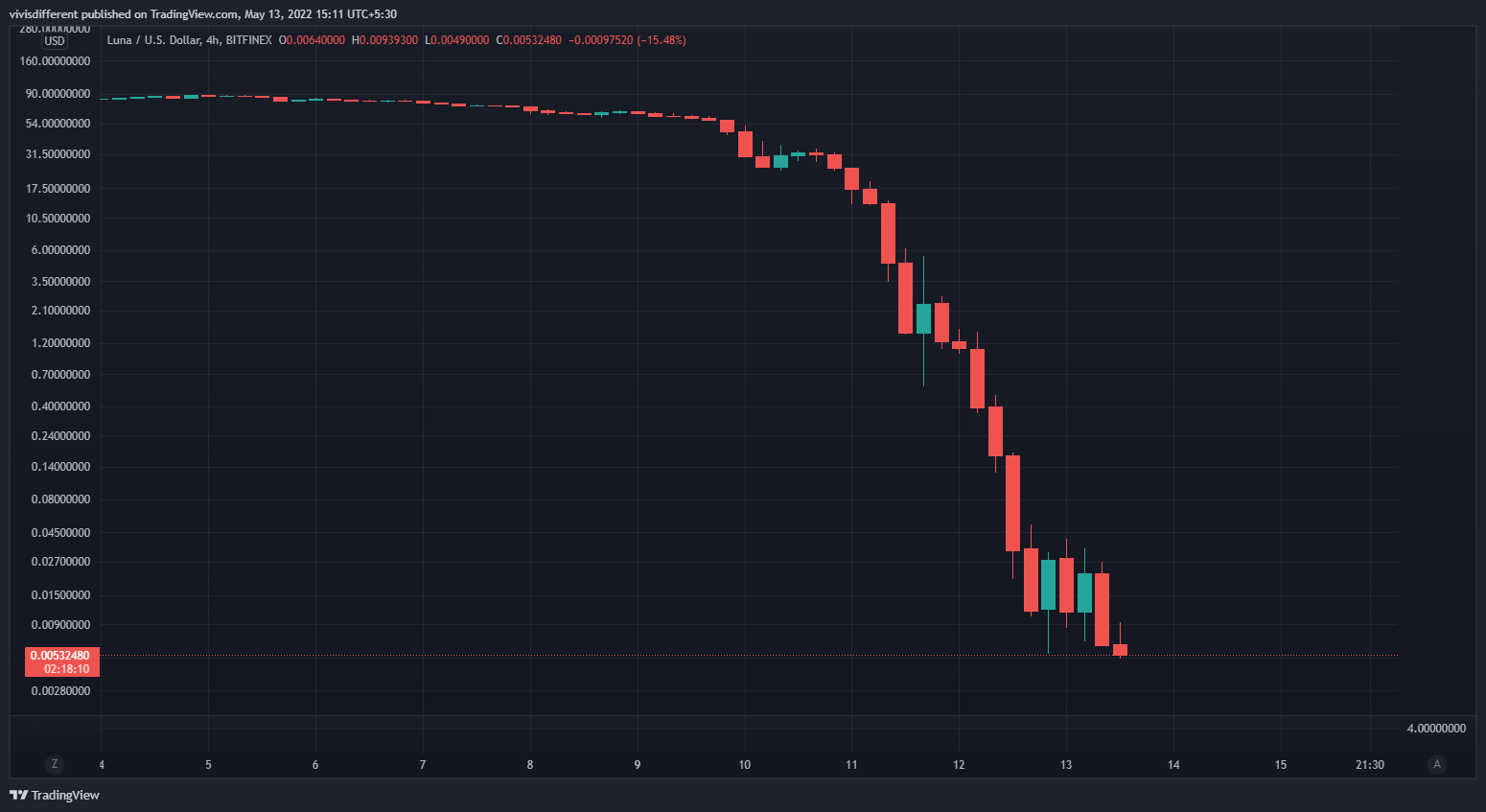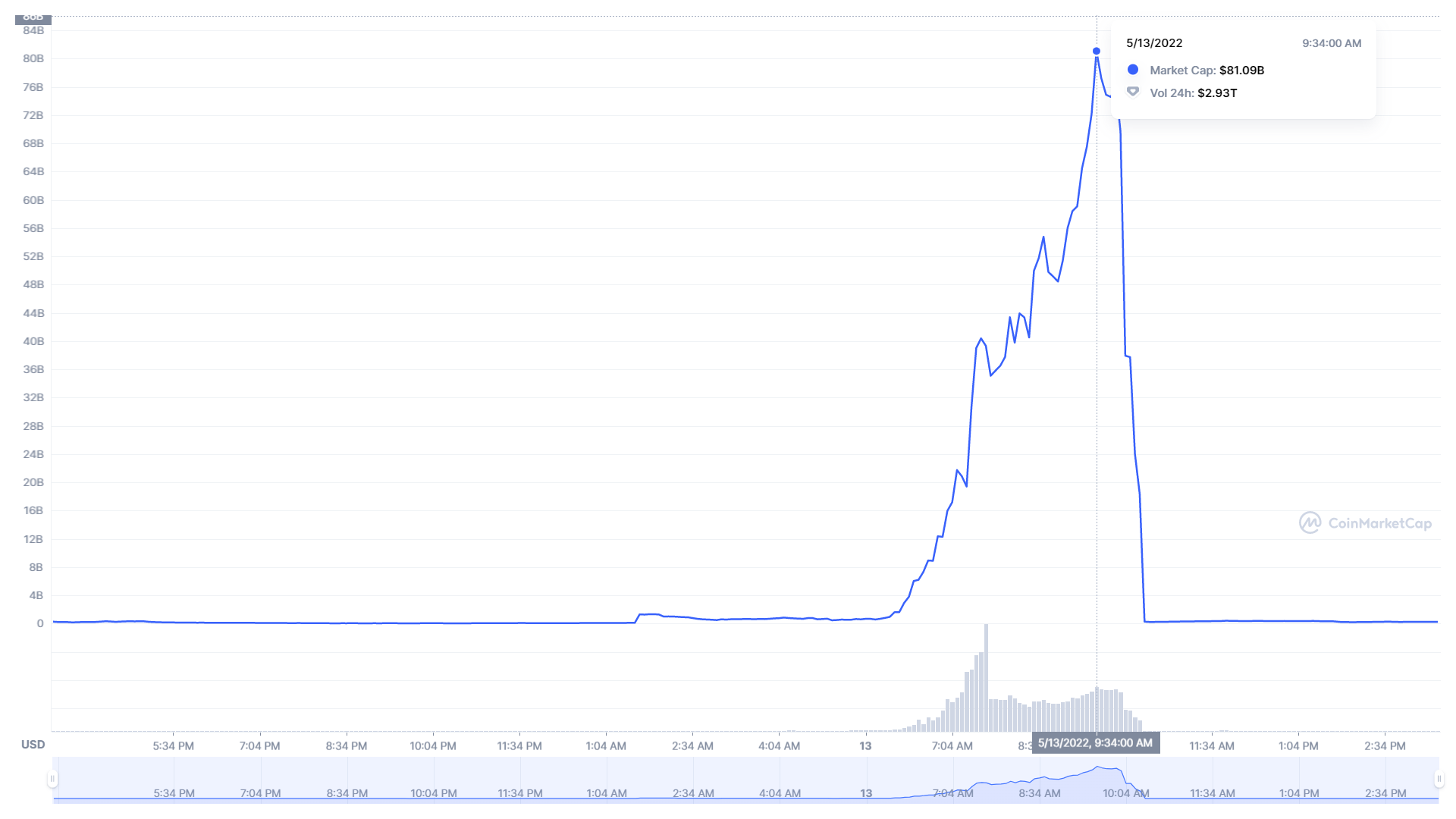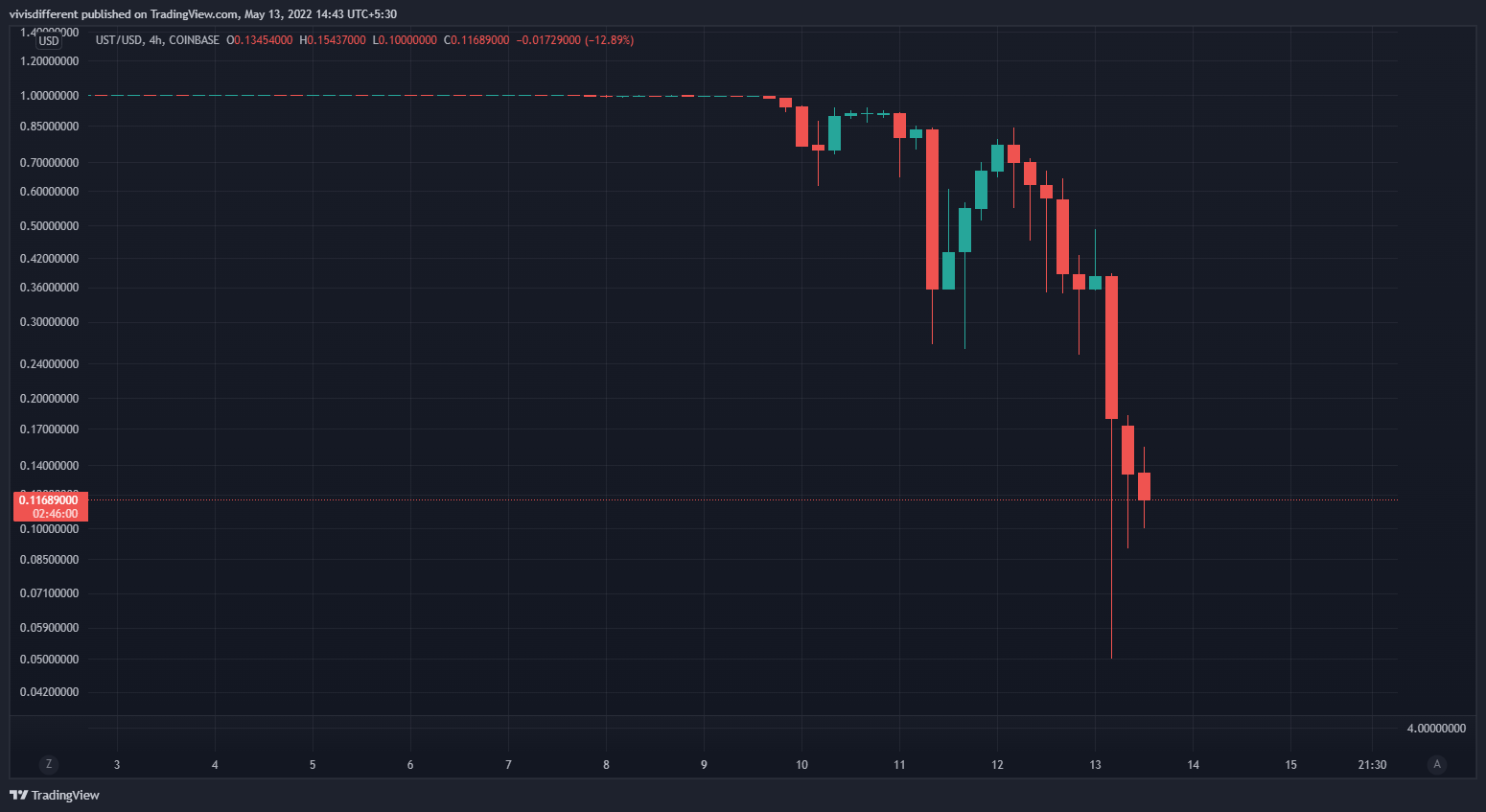Do Kwon, the brains behind the failed cryptocurrencies TerraUSD and Luna, is facing scrutiny and criticism after his venture’s failure provoked a catastrophic crypto market meltdown this week.
Kwon, 29, is the CEO of Terraform Labs, the business behind two linked technologies:
- Stablecoin TerraUSD (UST), which is expected to trade 1:1 with the US dollar, and
- Governance token Luna, which is supposed to keep the exchange rate stable.
What are stablecoins in cryptos?
Stablecoins like UST, Tether, and USDC act as bank accounts for the crypto community, with their value tied to fiat currencies such as the US dollar (on a 1:1 basis). They’re supposed to have a constant value (about $1), so they may be a stable store of value, unlike bitcoin, ethereum, and other cryptocurrencies.
Terra was one of the most valuable digital currencies globally. However, on Tuesday, the Terra stablecoin’s value un-pegged from the US dollar.
As TerraUSD un-pegged from the dollar this week, it sparked a larger meltdown, sending Bitcoin to its lowest level since 2020.
On Thursday, issuer Luna lost more than 99.99 percent of its value and was selling at less than one cent, down from a high of $120 last month.

How do the LUNA and UST work together?
The majority of stablecoins are backed by cash reserves,
with enough liquid assets on hand to equal the value of each currency.
Terra (UST) is an algorithmic stablecoin with a sister token named Luna that runs on pre-programmed smart contracts to back its value.
When the value of Terra falls below $1, it can be exchanged for Luna tokens (at a small profit). In principle, this should maintain the value of both.
It’s essentially generating money out of thin air, using a complicated system of smart contracts to keep the value of each UST token as close to $1 as feasible.
But the trouble was that these intricate algorithms failed miserably.
What caused the meltdown?
Luna and UST plummeted simultaneously in what observers have dubbed a death spiral. In other words, investors hurried to sell their digital assets before the algorithmic stabilizer could kick in.
Luna’s market value plunged from $81 billion to around $240 million, causing a selloff and a crisis of trust across the cryptocurrency industry. The de-pegg of UST has been ascribed as the chief reason for the entire meltdown!

De-pegging has happened to UST in the past, first in December 2020 and again in May 2021.

Terra took the following steps to protect the de-pegg:
- Terra Protocol infused $70,000,000 UST onto Anchor in July 2021 because it was about to run out of funding. This was a red flag for investors who believe Anchor’s long-term rates are unsustainable. Many people were unaware of the news.
- Terra announced its acquisition of $10 billion in Bitcoin in March 2022. BTC was supposed to be used as a reserve asset for UST. Terra had no choice but to sell their BTC to save the peg. Luna Foundation liquidated all 42,530 of its BTC in the previous two days, driving the BTC price even down and dragging down the entire crypto market.
- Terra revealed the 4pool on April 1, 2022. UST, FRAX, USDC, & USDT made up the 4pool, a new Curve pool. The 3pool on Curve was the dominating one at the time of the disclosure, and Terra was ready to migrate to the 4pool. Terra had to take money out of the 3pool to move it to the 4pool. Because of the insufficient liquidity during the period, the UST peg became vulnerable to attacks.
The actual attack began on March 27, when an anonymous player borrowed 100k BTC from Terra to sell into Terra’s bitcoin purchases. The aggressor had $1 billion at their discretion after selling into the markets to attack the peg.
They began selling UST into the Curve pool on May 7, forcing the price to drop. The Terra Foundation was compelled to start selling Bitcoin to keep the peg. The issue is that the BTC they bought had already depreciated due to the crypto market downturn.
Bitcoin was $42k at the point of purchase, and by the moment they needed to sell, it had dropped to $34k. While Terra was protecting the peg, the attacker went to Binance and began selling the rest of their UST (about $600 million). UST began to slide below $0.98 and lost its peg. It went as low as $0.05.

The selloff sets off a negative feedback cycle, causing everyone to panic-sell.
Investors who wanted to reduce their exposure to LUNA began to sell LUNA tokens on the market, while UST holders began exchanging their UST for LUNA, resulting in a massive increase in LUNA supply.
Impact on other cryptos
Those who possess bitcoin and other cryptocurrencies have also had a tough week as the value of their assets also has plummeted by billions of dollars. Bitcoin, commonly referred to as digital gold or a hedge against inflation, fell below $26,000 this week, a long cry from its record high price of $69,000 set in November.
Since then, the overall crypto market (including thousands of digital currencies and tokens) has lost more than half of its value. People have recently started selling their more risky, speculative assets, including cryptocurrency and tech stocks.
What measures is Terra taking to reverse the situation?
Terra announced on Twitter that they are taking measures to restore the health of the on-chain spreads.
1/ The prevailing peg pressure on $UST from its current supply overhang is rendering severe dilution of $LUNA.
The primary obstacle is expelling the bad debt from UST circulation at a clip fast enough for the system to restore the health of on-chain spreads.
— Terra (UST) 🌍 Powered by LUNA 🌕 (@terra_money) May 12, 2022
- The current proposal 1164 will expand the base pool size and accelerate the burn rate of UST – helping deflate on-chain spreads.
- Proposal to burn the remaining UST in the community pool
- TFL will burn the remaining 371 million UST cross-chain on Ethereum.
- TFL staked 240 million $LUNA to defend from network governance attacks.
Also, Terra’s supporters are currently attempting to raise $1.5 billion to enhance the stablecoin’s value and restore parity with the US dollar but have had little success thus far. Whether their efforts will yield any results, only time will tell.
Who caused this meltdown?
Considering the huge amount of money involved, many on social media are blaming big US hedge funds. Two of those firms, Citadel Securities and BlackRock, have already published statements denying any participation in Terra’s crash.
Rumors that we had a role in the collapse of UST are categorically false. In fact, BlackRock does not trade UST. https://t.co/0kjfwaZbwV
— BlackRock (@BlackRock) May 11, 2022
Lisa Wade, CEO of blockchain startup DigitalX, says she is not certain, but it could be the case with Hedge Funds, considering a vast amount of money was involved.
Wade stated that even though this type of trading was not illegal, its ethics were questionable. She believes that regulation of the crypto markets will be expedited.
Chaos among retail investors
Kwon successfully attracted high-profile investors, including Coinbase’s venture capital arm in Terraform Labs’ venture. This fortified the belief of more retail investors in his project.
The collapse of the Terra stablecoin has a severe human cost. Terra/Luna’s Reddit page lists many suicide prevention hotlines, including Australia’s LifeLine and comparable organizations from the US, the UK, Spain, China, Sweden, and 90 other countries.
Many Reddit users have shared their horror stories about losing money on Terra and Luna cryptocurrency investments.
One user stated: “I lost over 450k USD, I cannot pay the bank. I will lose my home soon. I’ll become homeless. suicide is the only way out for me”
Another user said: “I lost all my life savings. Had bought LUna at 85$ Not sure what to do. Lost around 5000 USD it might be a small amount for some but it was all I had. Someone, please advise what should I do next!?”
Reddit user No-Forever wrote, “I should’ve cashed out when it was $100, then I would have been up to $25,000. But I became greedy in the hopes of earning more money so that I could at least arrange a down payment for my house. I guess it means no house and no savings.”
A savings pool-backed UST contributed to its value of $18 billion. The interest rate on that savings account was 20%. So many people saved their money in the mistaken belief that they were earning risk-free deposits.
What are federal authorities saying?
While cryptocurrency markets are still too small to pose a danger to general financial stability, Reserve Bank deputy governor Michelle Bullock expressed concern about the volatility and losses experienced by small investors.
Michelle told a group of financial professionals at a FINSIA lunch that the crypto world is currently generating headaches for everyone. She stated that she is irritated to see the situation from a trader’s perspective and be clinical and analyze the trade, but some mothers and fathers have lost their savings.
However, worried investors are concerned that if the value of a supposedly “stable” digital asset can be wiped away in a matter of days, who will be next in the crypto firing line?
All prominent exchanges have since halted trading in LUNA and UST, but the entire episode shows a severe need for proper regulations in the crypto market. Else, events like this make the crypto market looks like a Ponzi scheme. However, the selloff in the broader crypto market looks to be diminishing. Major coins are near support levels and might bounce back soon.








